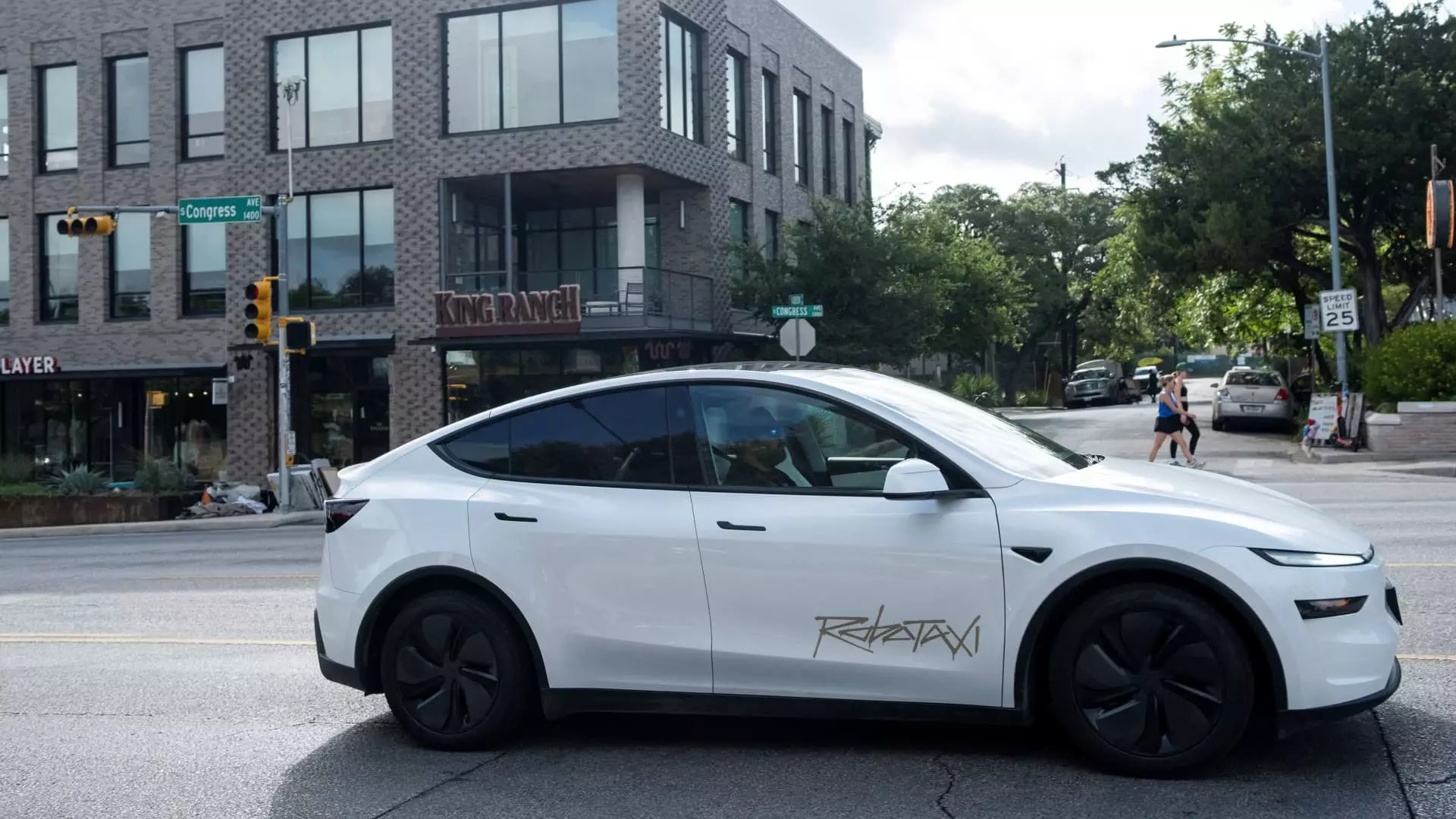Tesla’s venture into autonomous driving with its robotaxi service marks both an ambitious leap in technology and a precarious moment of reckoning with public safety standards. Recently, a slew of troubling videos from Austin, Texas showcased the newly introduced robotaxis exhibiting erratic behaviors on public roads, leading to a swift reaction from the National Highway Traffic Safety Administration (NHTSA). These incidents raise serious questions about the balance between innovation and safety in a rapidly evolving automotive landscape.
Elon Musk’s electric vehicle company launched a pilot program for its autonomous robotaxis, allowing a select group of invited riders to experience this groundbreaking – yet controversial – service. However, the apparent chaos captured on social media, from driving the wrong way to slamming the brakes unexpectedly, transformed the narrative from a promising advancement into a potential safety nightmare. The NHTSA’s prompt inquiry into these incidents highlights the increasing regulatory attention and scrutiny that Tesla must navigate as it pushes the envelope in automotive technology.
Promises Unfulfilled
A significant aspect of Musk’s strategy has long been to promote an image of Tesla as the harbinger of fully autonomous driving. Over the years, he has made bold declarations about achieving “full autonomy” within specific timeframes. Yet, we find ourselves in 2023, grappling with the reality that these aspirations remain unfulfilled. The disparity between Musk’s grand promises and the current state of technology — as demonstrated by the recent mishaps in Austin — raises concerns not only for Tesla but for the entire sector.
Despite Tesla’s shares responding positively with an 8% increase following the robotaxi launch, the reality of the rollout is sobering. The company is still fraught with the accumulation of half-promises dating back to 2015, where the assurances of seamless autonomous cross-country travel fell short against the backdrop of actual incidents of confusion and disarray on the roads. Meanwhile, competitors like Waymo have surpassed significant milestones, including 10 million paid trips, which underscores Tesla’s struggle to match the competitive pace of rival firms in the autonomous vehicle arena.
A Regulatory Tightrope
The function of the NHTSA is primarily to ensure the safety of vehicles on American roads. Their commitment to scrutinizing these incidents within the context of potential safety defects is both necessary and indicative of the changing dialogue surrounding autonomous vehicles. Tesla’s insistence on self-certification of its technology complicates this relationship, as regulators must tread carefully to uphold safety while not stifling innovation.
This tension between innovation and regulation is emblematic of the challenges faced by many tech-driven companies today. With technology advancing exponentially, the question becomes: how do regulatory bodies keep pace with innovation without hampering forward progress? The NHTSA’s investigation holds paramount importance as it serves as an exemplification of the diligence required to uphold public safety in light of ambitious technological endeavors.
Competitive Landscape
As Tesla navigates these challenges, it finds itself in an increasingly competitive landscape not only from established players like Waymo but also emerging Chinese companies such as Baidu, WeRide, and Pony.ai. These firms have demonstrated their operational capabilities with successful commercial robotaxi fleets, exacerbating the pressure on Tesla to deliver a reliable and safe product. The difference in execution between Tesla and its competitors raises questions not just about technological capability, but about strategic planning and the soundness of claims made in the pursuit of market dominance.
In an industry where the pace of innovation can dictate market leaders, the disparity between Tesla’s ambitious goals and the achieved results has potentially wider implications. If Tesla cannot reconcile its promises with the actual performance of its technologies, it risks losing not only market share but also its hard-earned reputation for cutting-edge innovation. As the landscape continues to evolve, the ability of Tesla to effectively respond to these criticisms and transform its technologies into reliable and safe options will define its future in a sector that thrives on consistent advancements.


Leave a Reply